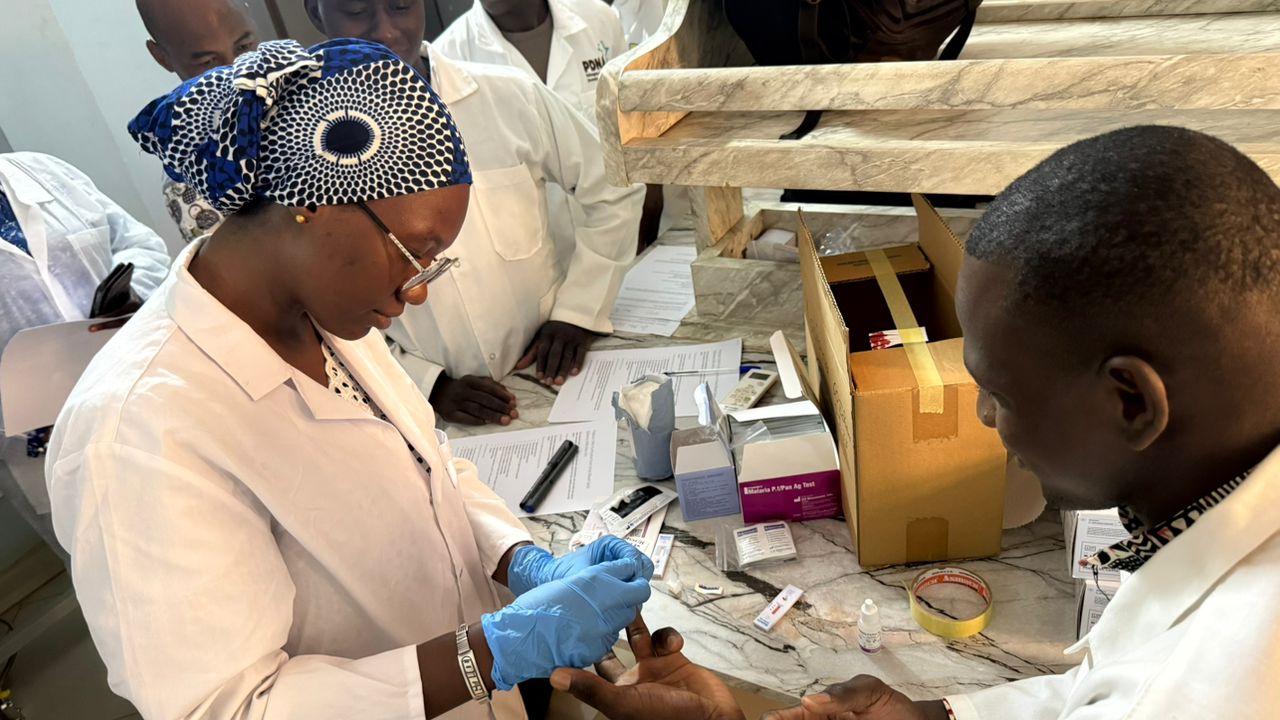HRP2
Malaria remains a major public health problem, with an estimated 241 million cases and 627,000 deaths in 2020. In endemic countries, it is crucial to test every suspected case and treat every confirmed case with a quality antimalarial drug to prevent deaths. Current diagnostic tools include microscopy and rapid diagnostic tests (RDTs). RDTs offer significant advantages over microscopy, including speed, simplicity and ease of use, and have become essential in endemic areas. Around 90% of available RDTs target Plasmodium falciparum's histidine-rich protein 2 (PfHRP2), with some also detecting PfHRP3 by cross-reactivity.
However, Plasmodium strains with Pfhrp2 gene deletions, which escape detection by PfHRP2-based RDTs, have been reported in Peru, Mali and other African countries. This situation could compromise malaria case management and threaten the effectiveness of current RDTs. WHO recommends that deletion-affected countries and their neighbors monitor deletions, especially in symptomatic patients, and switch to non-PfHRP2-based RDTs if the prevalence of deletion-affected parasites reaches 5%. Since Pfhrp2/3 deletions were first detected in Mali in 2012 in asymptomatic individuals, there have been no systematic studies of their impact in symptomatic patients.
The traditional method for molecular assays is to use filter papers for capillary blood samples, known as dried blood spots (DBS). However, several studies have shown that Plasmodium DNA extracted from used RDTs is of comparable quality and quantity to that from DBS, and is suitable for molecular analysis even after prolonged storage at room temperature. The use of used RDTs offers significant advantages, including simplified sample collection, drying, storage and shipping, with minimal risk of cross-contamination.
In this context, we propose to map the distribution of Pfhrp2 deletions to guide decisions on optimal diagnostic tests for malaria. This study will identify areas requiring diagnostic adjustments and those requiring future surveillance.
The project is led by Professor Abdoulaye Djimde of the University of Science, Techniques and Technologies of Bamako (USTTB), in collaboration with the head of epidemiological surveillance at Mali's National Malaria Control Program (NMCP).
This partner was chosen for its expertise in malaria genomics research and its laboratory facilities.
The results will be communicated to the PNLP to inform the choice of local RDTs, and to the WHO.
Overall objective:
Determine the prevalence of Plasmodium falciparum hrp2/3 gene deletions in symptomatic patients in Mali and use these data to guide rapid diagnostic testing strategies.
Specific objectives:
1. To measure the prevalence of suspected pfhrp2/pfhrp3 gene deletions in symptomatic patients infected with P. falciparum.
2. Evaluate the frequency of pfhrp2/3 gene deletions.
3. Identify districts where the prevalence of pfhrp2/3 gene deletions reaches or exceeds 5%.
Methodology:
This project will determine the prevalence of hrp2/3 deletions in Plasmodium falciparum parasites in Mali and evaluate the effectiveness of RDTs currently used in the country, which will benefit malaria patients in Mali.

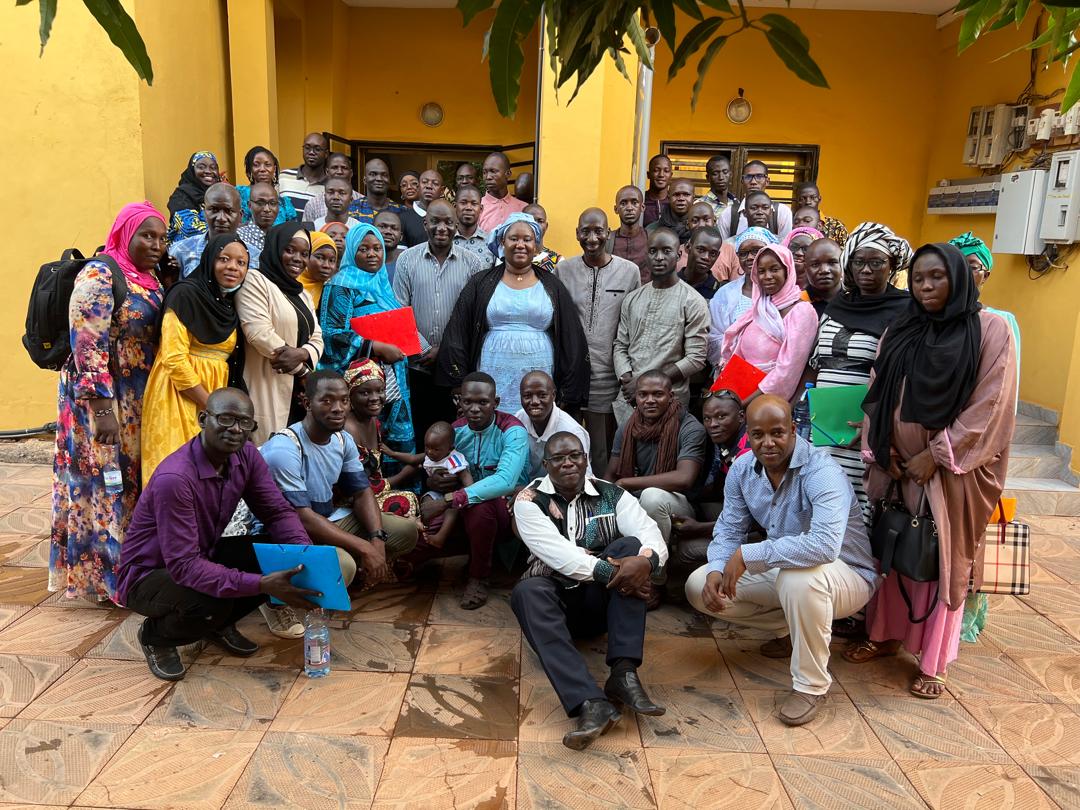
Malaria remains a public health problem. Countries where malaria is endemic should ensure that every suspected case of malaria is tested, and that every confirmed case is treated with a quality-assured antimalarial drug to prevent deaths.
To monitor PfHRP2/3 deletion, we trained laboratory technicians in 12 selected health districts and the Bamako district in simplified sample collection, drying, storage and shipping at room temperature (RDT strips, confetti). The 12 health districts and the Bamako district represent the four strata of malaria epidemiological transmission in the country. They were chosen following in-depth discussions with the PNLP, and based on their experience in areas such as accessibility, availability of appropriate facilities, and the security situation.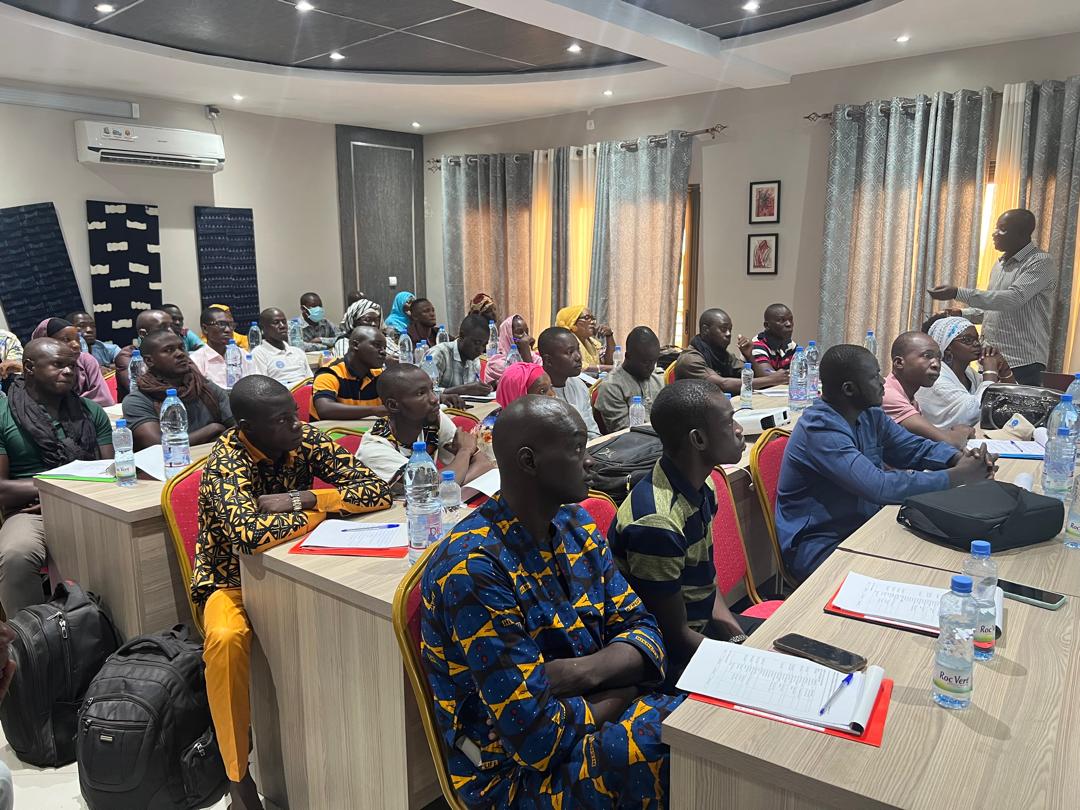
Course:
From July 03 to July 8, 2023, training was organized at PDNA's meeting room in Sotuba, near Bamako. The general objective was to train field laboratory technicians in epidemiological surveillance of the PfHRP2/3 deletion in Mali.

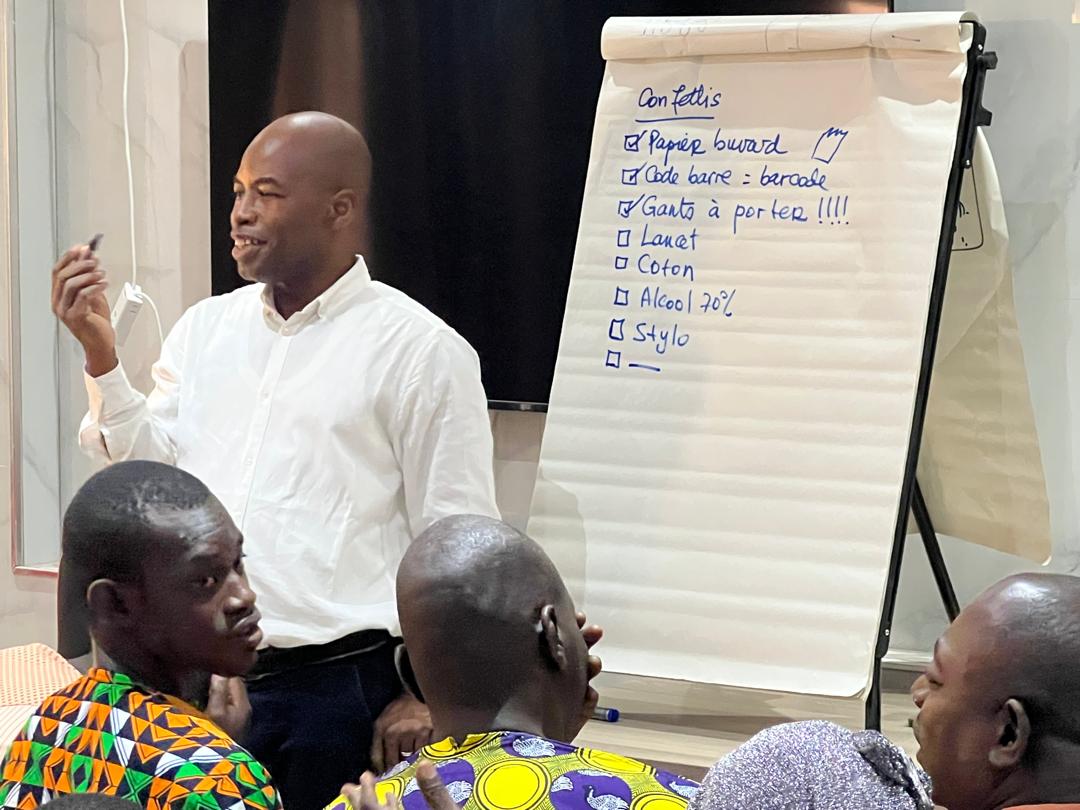
A total of 06 laboratory technicians per health district and 01 technician per commune for the District of Bamako took part in the training.
Theoretical courses were followed by practical applications on simplified sample collection, drying, storage and shipping at room temperature of samples (RDT strips and confetti) and recording patient information using a questionnaire. The training course aroused great interest among participants.
A video was produced and made available to them to initiate an ongoing training process.

As part of its capacity-building activities, the PDNA network organized a training course for laboratory technicians/staff from National Malaria Control Programs (NMCPs) in PDNA member countries.
Course and objective :
Participants : From 7 African countries including: ( Ivory Coast, Cape Verde, Gabon, Ghana, Gambia, Kenya and Nigeria).
This activity took place from March 4 to 9, 2024 in the PDNA training room in Sotuba, Bamako-Mali in the presence of the workshop coordinator, Dr. Teketé who gave a presentation of the PDNA Network, all the projects and also gave the status of ongoing research.
The aim of the workshop was to enable participants to generate, analyze and use genomic data to support malaria control and elimination efforts in Africa.
The workshop enabled participants to :
- carry out the polymerase chain reaction (PCR) ;
- become familiar with the different molecular markers of resistance to different antimalarial drugs;
- detect plasmodial species using molecular tools.

These (7) seven days of training were marked by a series of presentations followed by practical work in the laboratories.
This operation aroused a great deal of interest among participants, making it an extremely attractive and eye-opening experience.
The workshop closed with words of encouragement and congratulations from the workshop coordinator to the supervisors and participants.
A dinner was offered to the participants.

Context
From November 13 - 17, 2024, New Orleans hosted the annual meeting of the American Society of Tropical Medicine and Hygiene (ASTMH), a must-attend meeting that brings together the world's leading experts.
Dr. Hinda made an impression by delivering two (2) oral presentations selected by a committee of experts. This recognition is a testament to the excellence of PDNA's work and its relevance to the international scientific community.
The first presentation
Dr. Hinda presented the basics of the project: "Implementation of pfhrp2 /3 gene deletions surveillance in Mali" during a workshop. The objective was to highlight the strategy adopted to ensure surveillance of HRP2/3 gene deletions in Mali, a crucial issue in the fight against malaria.
The presentation detailed the implementation protocol, the actions taken by the PDNA team and the initiatives taken to strengthen the capacity of health technicians. The session was followed by a question-and-answer session, providing a framework for constructive exchanges.
The participants praised the quality and scientific rigor of the presentation, and highlighted the decisive role played by the PDNA team in training health professionals, supervising field activities and especially especially in collecting a large number of samples.
The second presentation:
In another session, Dr. Hinda continued his interventions with a second presentation entitled "Countrywide PfHRP2-3 gene deletion surveillance in Mali". This presentation focused on the results of the research conducted within the PDNA, highlighting the significant progress made in studying of the frequency of HRP2 gene deletions.
This knowledge sharing provided a valuable networking opportunity and was of particular interest to some of the experts present. Several researchers and institutions expressed their willingness to collaborate with the PDNA.
A well-deserved recognition
The PDNA's commitment was recognized at the 2024 edition of the ASTMH. By highlighting important public health issues, these interventions have strengthened the visibility of the PDNA.
Congratulations to Dr. Hinda for this success.
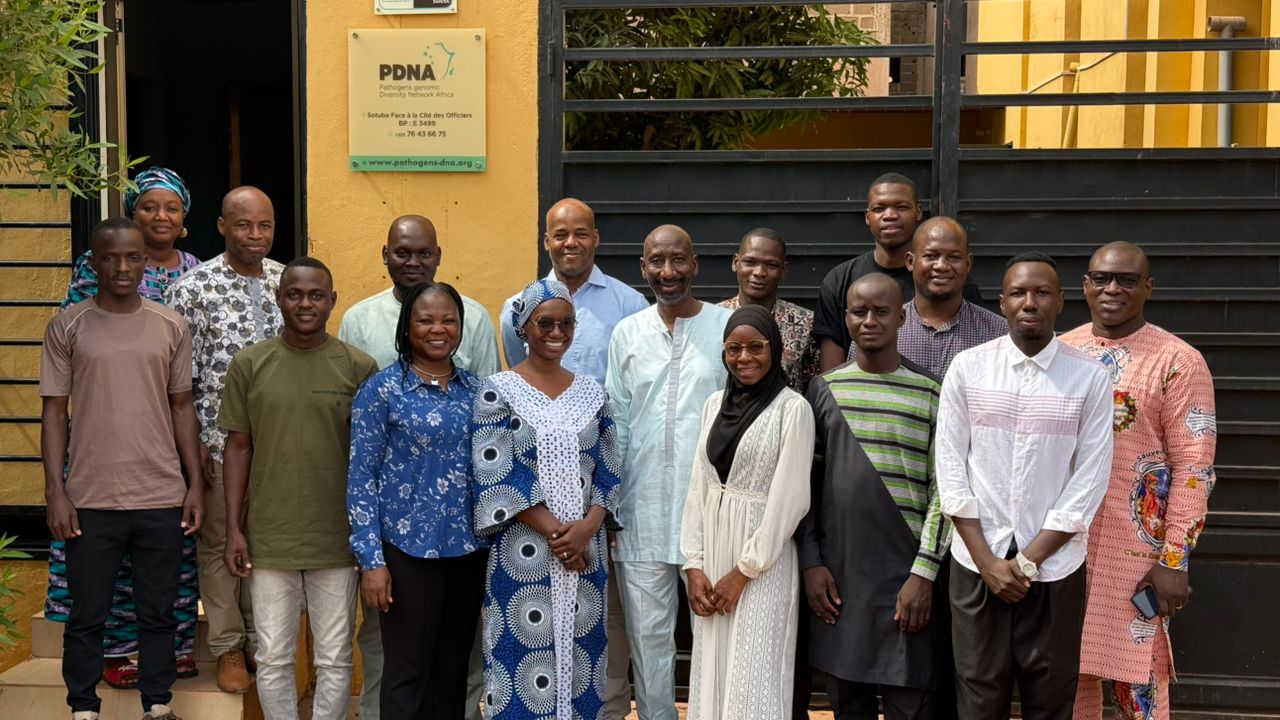
As part of the surveillance of the pfhrp2 and pfhrp3 deletion and to address this threat, the Pathogens Genomic Diversity Network Africa (PDNA) organized a training workshop from May 12 to 17, 2025, in Sotuba. This workshop was intended for researchers from Benin, Côte d'Ivoire, Ghana, Mali, and Uganda.
The objective was to learn how to use an advanced laboratory method called real-time PCR, capable of accurately detecting parasite strains that elude conventional tests.
Theoretical and practical training
Over six days, participants received:
- Courses on malaria, PCR, and parasite genetic surveillance
- Practical laboratory work, particularly on sample preparation and analysis
Thanks to this initiative, participants were better prepared to detect difficult cases of malaria and improve diagnostics to prevent patients from receiving inadequate treatment. This is therefore an essential step to preserve the effectiveness of current tests and strengthen the fight against malaria in order to save lives.
